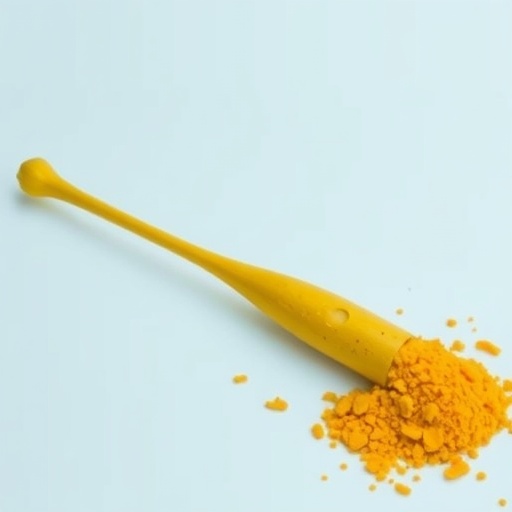In recent years, the burgeoning field of natural product research has revealed the impressive potential of traditional medicinal plants in combating various infections. One such plant that has garnered considerable attention is Curcuma longa, more commonly known as turmeric. This ancient remedy has been utilized for centuries due to its myriad health benefits, owing to its active compound, curcumin. The latest research conducted by Rahman, Patwary, Ahmed, and their colleagues dives deep into the antidermatophytic properties of Curcuma longa, particularly focusing on its effectiveness against the notorious Trichophyton spp., a genus of fungi known to cause skin infections.
Trichophyton spp. is a significant pathogen among dermatophytes, which are responsible for a range of superficial skin infections collectively known as dermatophytosis. This group of fungi affects millions of people worldwide and poses a challenge to public health. In the quest for alternative treatments, especially in an era marked by increasing antifungal resistance and side effects associated with conventional antifungal therapies, researchers are turning to nature for effective solutions.
In this insightful study, the researchers undertook the challenge of exploring the biochemical components of Curcuma longa. Through rigorous experimentation, they aimed to isolate and identify the specific compounds responsible for its antifungal activity. The methodology employed includes various extraction techniques that allowed for the thorough analysis of turmeric’s constituents. Subsequent tests demonstrated that the extracts of Curcuma longa exhibit potent antifungal properties, inhibiting the growth of Trichophyton spp. This finding is crucial, especially as the reliance on synthetic antifungal drugs continues to raise concerns about long-term efficacy and safety.
Moreover, the research introduces the innovative approach of molecular docking, a computational method that allows scientists to predict how molecules interact. By utilizing this technique, the authors were able to virtually assess the binding affinity of the active compounds found in Curcuma longa to lanosterol 14α-demethylase, an essential enzyme in the biosynthesis of ergosterol, a critical component of fungal cell membranes. The binding of these compounds highlights how Curcuma longa can disrupt the normal physiological functions of Trichophyton spp. by hindering the production of ergosterol, thereby compromising the integrity of their cell membranes.
The research underscored the importance of understanding the pharmacological mechanisms underlying the antifungal activity of plant-derived substances. Through their in-depth analysis, the authors identified specific phytochemicals that showed remarkable efficacy against Trichophyton spp. These findings not only validate traditional knowledge surrounding the use of Curcuma longa for treating fungal infections but also lay the groundwork for future research aimed at developing novel therapeutic agents derived from natural sources.
Antimicrobial resistance is an increasing threat across the globe, and the rise of resistant strains of dermatophytes necessitates the exploration of alternative therapies. The study by Rahman et al. contributes significantly to this endeavor by offering a promising candidate in the form of Curcuma longa. The researchers emphasize that their findings should encourage further exploration into the therapeutic potentials of other medicinal plants that have long been utilized in traditional medicine.
The authors also discuss the implications of their work for the development of new antifungal agents. By highlighting the components of Curcuma longa that were shown to possess antifungal activity, they pave the way for bioprospecting efforts to discover new herbal remedies. Not only does this approach hold promise for addressing current resistance issues, but it also aligns with the increasing consumer demand for natural and herbal alternatives to pharmaceuticals.
There is a broader socio-economic context to consider as well. The use of plants like Curcuma longa in therapeutic settings encourages sustainable practices by promoting local agriculture and responsible harvesting methods. Incorporating these natural resources into modern medicine fits the sustainability ethos that many consumers are looking for. It ties back to a more holistic approach to health where nature and science work hand in hand.
Given the results of the study, the authors call for more comprehensive clinical trials to validate the efficacy and safety of these findings in human subjects. While in vitro results are promising, it is critical to ensure that treatments derived from these herbs are effective and safe for human use. Future studies would benefit from examining dosage parameters and potential side effects to confirm the therapeutic index of Curcuma longa as an antifungal agent.
In conclusion, the research conducted by Rahman and his collaborators sheds light on the promising antidermatophytic activity of Curcuma longa against Trichophyton spp. By providing scientific substantiation for its use in traditional medicine, this study not only adds to a body of literature that explores natural remedies but also inspires hope for innovative antifungal strategies in the fight against dermatophyte infections. The interdisciplinary approach utilized in this study sets a precedent for future research that blends traditional knowledge with modern scientific methodologies, ultimately benefitting both medicine and society at large.
Amid mounting antifungal resistance and the quest for effective treatments, articles such as these serve as clarion calls for researchers and medical professionals alike to explore the synergy between nature and science, ultimately leading to novel, effective solutions for combating infections that have plagued humanity for centuries.
Subject of Research:
Antidermatophytic activity of Curcuma longa against Trichophyton spp.
Article Title:
Antidermatophytic activity of Curcuma longa against Trichophyton spp.: compound identification and molecular docking to lanosterol 14α-demethylase.
Article References:
Rahman, A.B.Z.N., Patwary, M.F., Ahmed, S. et al. Antidermatophytic activity of Curcuma longa against Trichophyton spp.: compound identification and molecular docking to lanosterol 14α-demethylase.
BMC Complement Med Ther 25, 321 (2025). https://doi.org/10.1186/s12906-025-05049-9
Image Credits:
AI Generated
DOI:
Keywords:
Curcuma longa, Antidermatophytic activity, Trichophyton spp., Molecular docking, Natural remedies, Antifungal resistance




